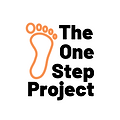The Stigma Around Mental Health
- Ria Bhatia

- Aug 7, 2019
- 3 min read
Updated: Aug 13, 2019

In our society, many people tend to recoil at the mention of mental health and/or illnesses. This is usually because people aren’t used to (and aren’t open to) talking about mental health and illnesses. The term for this dilemma is called “stigma”.
Generally, stigma means “a mark of disgrace associated with a particular circumstance, quality, or person”, and holds the synonyms of “shame” and “disgrace”. In terms of mental health, stigma tends to be divided into several categories, but mainly two.
The first category is called social stigma, which tends to concern the prejudice and disfavor of a person who is dealing with mental health and/or illnesses. Due to this, many people who live with mental health issues are shut out, often with claims stating that these people should “get over it”, “walk it off”, or “it’s all in their head”. The social stigma behind mental health often tends to directly affect those who have problems with their mental health. According to the National Association on Mental Illness (NAMI), 1 in 5 Americans suffering from mental illnesses is affected by stigma.
Due to the social stigma behind mental health, unfortunate judgment, discrimination, and stereotypes occur. Often, people with mental illnesses are assumed to be violent, unstable, etc., causing society to shut them out and be scared of them. In effect, people suffering from mental health issues and illnesses are faced with the challenges of isolation and shame, causing them to refrain from gaining support and help.
The second category, often a direct result of social stigma, is self-stigma. This occurs when a person dealing with mental health issues and/or illnesses internalizes the prejudice, stereotypes, and discrimination of stigma inflicted upon their society (or them directly). As another type of stigma, self-stigma also tends to cause isolation and shame, as well as prompting the individual to refrain from gaining support and help to deal with their problems. As these individuals refrain from seeking help, their condition could possibly worsen, decreasing chances of recovery.
Now, a lot of light has been shed on the stigma around mental health, influencing the formation of a global movement called “Break the Stigma”. The movement can also be known as “End the Stigma”, “Stigma Free”, and much more. The purpose of the “Break the Stigma” movement is to end the stigma around mental health. Over time, the movement has gained immense popularity, spreading throughout social media and our daily lives, creating awareness about the stigma around mental health.
You may be wondering how you can be involved in the movement’s impact. A good start is to avoid inflicting stigma upon others/yourself. A simple way is to pay attention to your phrasing. Refrain from calling people crazy, lunatics, and other slang terms that target those with mental illnesses. Here are some other ways to be involved in breaking the stigma:
See the person behind the condition
Offer support to someone who you think might be in need
Don’t label people
Educate yourself about mental health
Talk about mental health within your community
Be empathetic to those who are suffering
Manage your language and use respectful terms
The stigma around mental health is a problem that should be left in the past. No person should have to live in an atmosphere of stigma. Join us in making a difference and influencing our society to break the stigma.
Sources:
StigmaFree Me | National Association on Mental Illness (NAMI)
5 Ways to Break the Stigma Associated with Mental Health | PsyTech
Written by Ria Bhatia
.png)




Comments